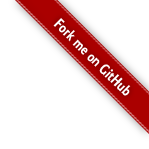Classification
In order to use different models, query strategies, and stopping criteria from the active learner, we have developed classification abstractions that provide an unified interface.
Interface
The classifier interface is very simple and scikit-learn-like, with the difference that it operates on
Datasets objects. Call the fit() method with a
training set as argument to train your classifier, and use predict() to get a prediction.
class Classifier(ABC):
"""
Abstract base class for classifiers that can be used with the active learning components."""
@abstractmethod
def fit(self, train_set):
pass
@abstractmethod
def predict(self, data_set, return_proba=False):
pass
@abstractmethod
def predict_proba(self, data_set):
pass
Example
This is a simple example which shows the training of a tiny toy dataset.
import numpy as np
from small_text.classifiers import ConfidenceEnhancedLinearSVC, SklearnClassifier
from small_text.data import SklearnDataset
# this is a linear which has been extended to return confidence estimates
model = ConfidenceEnhancedLinearSVC()
num_classes = 2
clf = SklearnClassifier(model, num_classes)
x = np.array([
[0, 0],
[0, 0.5],
[0.5, 1],
[1, 1]
])
y = np.array([0, 0, 1, 1])
train_set = SklearnDataset(x, y)
clf.fit(train_set)
"""
Generate predictions on the train set
(Only for the purpose of demonstration;
usually you would be more interested in obtaining predictions on new, unseen data.)
"""
y_train_pred = clf.predict(train_set)
print(y_train_pred)
Output:
[0 0 1 1]
Factories
To configure the active learner to use classifiers a factory object is required because new classifier objects are created at each iteration (unless explicitly configured not to). A factory creates new instances of an object, for which the knowledge of what to pass to the constructor is required, which is why we need a factory. Assuming all constructor took zero arguments we would not need factories here.
from small_text.classifiers import ConfidenceEnhancedLinearSVC
from small_text.classifiers.factories import SklearnClassifierFactory
clf_template = ConfidenceEnhancedLinearSVC()
num_classes = 2
clf_factory = SklearnClassifierFactory(clf_template, num_classes)
clf = clf_factory.new()
This also means that any classifier parameters, e.g. for multi-label classification, are managed by the factory:
from small_text.classifiers import ConfidenceEnhancedLinearSVC
from small_text.classifiers.factories import SklearnClassifierFactory
clf_template = ConfidenceEnhancedLinearSVC()
num_classes = 2
classifier_kwargs = {'multi_label': True}
clf_factory = SklearnClassifierFactory(clf_template, num_classes, kwargs=classifier_kwargs)
clf = clf_factory.new()
